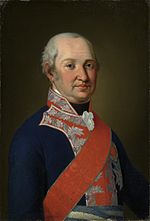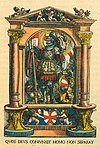Electoral Palatinate
This article includes a list of general references, but it lacks sufficient corresponding inline citations. (August 2018) |
Electorate of the Palatinate | |||||||||||||||||||||
|---|---|---|---|---|---|---|---|---|---|---|---|---|---|---|---|---|---|---|---|---|---|
| 1085–1803 | |||||||||||||||||||||
Elector | | ||||||||||||||||||||
• 1085–1095 | Henry of Laach (first) | ||||||||||||||||||||
• 1799–1803 | Maximilian Joseph (last) | ||||||||||||||||||||
| Historical era | |||||||||||||||||||||
• Demotion of the Count Palatine of Lotharingia | 1085 | ||||||||||||||||||||
| 10 January 1356 | |||||||||||||||||||||
| 15 May – 24 October 1648 | |||||||||||||||||||||
• Subsumed by Bavaria | 30 December 1777 | ||||||||||||||||||||
| 9 February 1801 | |||||||||||||||||||||
| 27 April 1803 | |||||||||||||||||||||
| |||||||||||||||||||||
| Today part of | |||||||||||||||||||||
The Electoral Palatinate (
The territory stretched from the left bank of the Upper Rhine, from the Hunsrück mountain range in what is today the Palatinate region in the German federal state of Rhineland-Palatinate and the adjacent parts of the French regions of Alsace and Lorraine (bailiwick of Seltz from 1418 to 1766) to the opposite territory on the east bank of the Rhine in present-day Hesse and Baden-Württemberg up to the Odenwald range and the southern Kraichgau region, containing the capital cities of Heidelberg and Mannheim.
The counts palatine of the Rhine held the office of
History
Background

The comital office of Count Palatine at the Frankish court of King Childebert I was already mentioned about 535. The Counts Palatine were the permanent representatives of the king in particular geographic areas, in contrast to the semi-independent authority of the dukes (and their successors). Under the Merovingian dynasty, the position had been a purely appointed one, but by the Middle Ages had evolved into an hereditary one.
Up to the tenth century, the Frankish empire was centered at the royal palace (Pfalz) in Aachen, in what had become the Carolingian kingdom of Lotharingia. Consequently, the Count Palatine of Lotharingia became the most important of the Counts Palatine. Marital alliances meant that, by the Middle Ages, most Count Palatine positions had been inherited by the duke of the associated province, but the importance of the Count Palatine of Lotharingia enabled it to remain as an independent position.
In 985, Herman I, a scion of the Ezzonids, is mentioned as count palatine of Lotharingia (which by then had been divided into Upper and Lower Lotharingia). While his Palatine authority operated over the whole of Upper Lorraine, the feudal territories of his family were instead scattered around south-western Franconia, including parts of the Rhineland around Cologne and Bonn, and areas around the rivers Moselle and Nahe.
In continual conflicts with the rivalling

From about 1085/86, after the death of the last Ezzonian count palatine
Various noble dynasties competed to be enfeoffed with the Palatinate by the
The first hereditary Count Palatine of the Rhine was

Upon Conrad's death in 1195, the Palatinate passed to the House of Welf through the (secret) marriage of his daughter Agnes with Henry of Brunswick. When Henry's son Henry the Younger died without heirs in 1214, the Hohenstaufen king Frederick II enfeoffed the Wittelsbach Duke Louis I of Bavaria, whose son, Otto II of Bavaria married Agnes of the Palatinate, daughter of Henry of Brunswick and Agnes of Hohenstaufen in 1222. The Bavarian House of Wittelsbach eventually held the Palatinate territories until 1918.
During a later division of territory among the heirs of Duke
With the

In the
Due to the practice of dividing territories among different branches of the family, by the early 16th century junior lines of the Palatine Wittelsbachs came to rule in
Thirty Years' War
In 1619, the Protestant Frederick V, Elector Palatine accepted the throne of Bohemia from the Bohemian Diet. This initiated the 1618–1648 Thirty Years' War, one of the most destructive conflicts in human history; it caused over eight million fatalities from military action, violence, famine and plague, the vast majority in the German states of the Holy Roman Empire.[3] In terms of proportional German casualties and destruction, it was surpassed only by the period January to May 1945 and remains the single greatest war trauma in German memory.[4]
Frederick was evicted from Bohemia in 1620 following his defeat by the forces of
After his death in 1632, Frederick's daughter
In 1670, Charles II's sister
Nine Years' War

When France invaded the Palatinate in September 1688 to enforce its claim, these wider connections meant the conflict rapidly escalated, leading to the outbreak of the
Johann Wilhelm succeeded as elector in 1690, changing his residence first to Düsseldorf, then back to Heidelberg and finally Mannheim in 1720. Like his father, he was a Catholic, which under the 1555 Peace of Augsburg meant the Protestant majority in the Palatinate was theoretically obliged to convert to Catholicism. The 1705 'Palatine Church Division' compromised by allocating five-sevenths of public church property to the Reformed or Calvinist church and the remainder to Catholicism, while excluding the Lutheran Church, whose membership exceeded 40% of the population in some areas.[8]
In 1716, Charles Philip succeeded his brother as elector and in January 1742, helped his cousin Charles Albert become the first non-Habsburg emperor in over 300 years.[9] He died in December and the Palatinate passed to Charles Theodore, then Duke of Sulzbach, who also inherited the Electorate of Bavaria in 1777. The title and authority of the two electorates were combined, Charles and his heirs retaining only the vote and precedence of the Bavarian elector, although continuing to use the title 'Count Palatine of the Rhine'.
Mediatisation

The Palatine territories on the
Coat of arms and flag
| Coat of arms of the Electoral Palatinate | |
|---|---|
Elector of the Palatinate |
In 1156
By marriage, the Palatinate's arms also became[year needed] quartered with those of Welf and later Wittelsbach.[12] The arms of Bavaria were used with reference to the elector's holdings in Bavaria. This was extended to quartering of the lion and the Bavarian Arms upon the ascension of Maximilian I to the position of elector of the Palatinate in 1623, used concurrently with the arms shown. From 1356 onwards, the orb represented their position as Arch-Steward of the Holy Roman Empire.
- Coats of arms:
-
House of Wittelsbach (Electoral Palatinate)
-
House of Palatinate-Simmern (Electoral Palatinate)
-
House of Palatinate-Simmern (variant)
-
Greater Coat of arms from 1703
- Flags:
-
The variant used by Wittelsbachs who inherited the Palatinate in the mid-14th century
-
1604 design
-
The colors of the country (Landesfarben) ensign (alternate flag)
Legacy

In 1806, Baden was raised to a grand duchy and parts of the former Palatinate including Mannheim became part of it. At the Congress of Vienna in 1814 and 1815, southern parts of the left-bank Palatinate were restored and enlarged by mediatisation (consuming the former Prince-Bishopric of Speyer, the Free Imperial City of Speyer, and others) up to the new border with France, and given (temporarily) to the Habsburg Austrian Empire; after this time, it was this new region that was principally known as "the Palatinate". The right-bank Palatinate remained with Baden while northern parts became part of Prussia (Rhine Province) and Hesse (Rhenish Hesse).
In 1816, the Palatinate became a formal part of the Wittelsbach
In September 1946 the territory was made part of the federal state of Rhineland-Palatinate, along with former left bank territories of Prussia (southern part of the Rhine Province, including the former Principality of Birkenfeld which had been an exclave of Oldenburg until 1937, and western parts of the Province of Nassau) and Rhenish Hesse. The former Territory of the Saar Basin was reinstated and expanded to create the French Saar Protectorate, which returned to Germany in 1956 as the modern state of Saarland.
See also
- Count palatine
- German Palatines
- List of Counts Palatine of the Rhine
References
- ^ Ralph Dornfeld Owen, Palatine & Palatinate, p. 231. Retrieved 29 November 2015.
- ISBN 978-3-7650-8329-7.
- ^ Wilson 2009, p. 787.
- ^ "Der Dreißigjährige Krieg – die Urkatastrophe der deutschen Geschichte?". Der Teckbote (in German). 21 October 2014. Retrieved 23 July 2018.
- ^ Jackson 2021, p. 463.
- ^ Lynn 1999, p. 198.
- ^ Dosquet 2016, pp. 643–644.
- ^ Beiler 2008, pp. 60–61.
- ^ Lindsay 1957, p. 420.
- ^ "Die Auflösung der Kurpfalz" [Dissolution of the Electoral Palatinate]. Kurpfalz Regional Archiv. Retrieved 11 September 2021.
- ^ Nicholls 1999, p. 18.
- ^ Diemer, Klaus (2007). "Der Pfälzer Löwe" [The Palatinate Lion]. Archived from the original on 2 May 2008.
Sources
- Beiler, Rosalind (2008). Immigrant and Entrepreneur: The Atlantic World of Caspar Wistar, 1650–1750. The Pennsylvania State University Press. pp. 60–61. ISBN 978-0-271-03595-6. Retrieved 28 October 2018.
- Dosquet, Emilie (2016). "The Desolation of the Palatinate as a European News Event in News Networks in Early Modern Europe". News Networks in Early Modern Europe. Brill: 643–644. JSTOR 10.1163/j.ctt1w8h1ng.35.
- Jackson, Clare (2021). Devil Land; England under Siege 1588 - 1688. Allen Lane. ISBN 978-0241285817.
- Lindsay, J. O. (1957). The New Cambridge Modern History: Volume 7, The Old Regime, 1713–1763. Cambridge University Press; New edition. p. 420. ISBN 978-0-521-04545-2.
- Lynn, John (1999). The Wars of Louis XIV, 1667–1714. Longman. ISBN 978-0-582-05629-9.
- Nicholls, David (1999). Napoleon: A Biographical Companion. ABC-CLIO. p. 18. ISBN 978-0-87436-957-1.
- Wilson, Peter H. (2009). Europe's Tragedy: A History of the Thirty Years War. Allen Lane. ISBN 978-0-7139-9592-3.
Further reading
- OL 31002050M.















